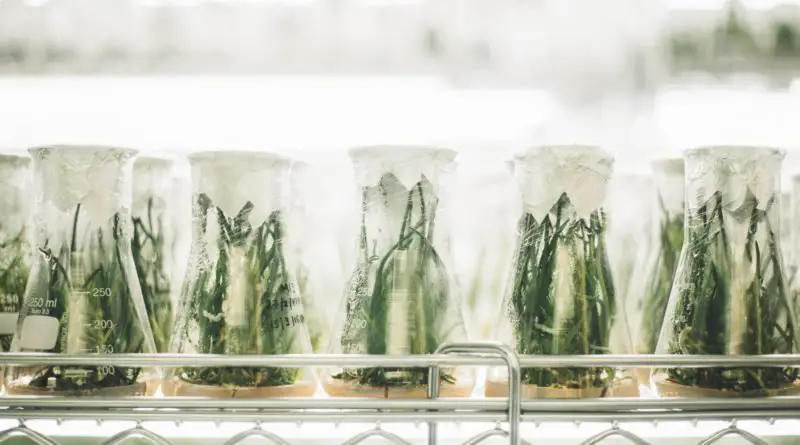Last modified on October 13th, 2020 at 10:20 pm
Health and Wellness Fact: How Is CBD Oil Made?
Changing laws and perceptions around CBD have put a spotlight on this wonder product. CBD oil has been used by many to treat many different ailments and restore health and wellness in surprising ways.
There are also a lot of different kinds of CBD oil. There’s CBD oil with MCT, CBD gummies, topical creams, and more. How can a single product be so diverse?
There are still a lot of misconceptions out there regarding CBD oil, and in order to fully understand what it is and what it can potentially do for the body, it’s important to understand how it’s made. Here are a few basics of the process.
Industrial Hemp
One of the biggest misconceptions about CBD is that it’s derived from the marijuana plant. This strain of cannabis sativa is very high in THC and very low in CBD, so although you could pull CBD from the marijuana plant, it’s usually considered a THC product because the THC content is so much higher than the CBD.
CBD sold online, in gas stations, and in liquor stores around the country is almost always derived from the industrial hemp plant. This is another strain of cannabis that’s very high in CBD and very low in THC. In fact, the THC content rarely exceeds 0.3 percent of the total product, and if it does, it’s usually trimmed down during extraction to meet legal levels.
Industrial hemp is a crop that’s closely monitored by the USDA. When buying CBD, you’ll want to make sure that it’s sourced from USDA farmland because they have strict guidelines that farmers must adhere to when growing CBD.
Specifically, they monitor the organic growth of CBD, ensuring that no pesticides, herbicides, chemicals, or toxins were used when growing CBD. This is very important because of the way that CBD is extracted. If it wasn’t grown organically, some of the toxins could make its way into the oil, which could be dangerous for the consumer.
Extracting CBD from Hemp
When the industrial hemp plants have reached maturity, it’s time to extract the CBD from the hemp. This is actually a very complicated process that requires special equipment and trained chemists to get the desired results. There are several ways that this can be accomplished:
Carbon Dioxide:
This is considered the purest and safest way to extract CBD, and it’s therefore the most popular. It uses CO2, which has the unique ability to function as solid, liquid, or gas, and use it to pull the CBD from the hemp plant and put it into a supercritical state.
High pressures and high temperatures are used to allow the CO2 to absorb all the oils and flavors of the hemp plant. This is then pumped into another chamber where it can return to the gas state, leaving behind all the pieces of the plant.
Liquid Solvents:
Using a similar path as CO2 extraction, liquid solvents can be used to absorb the CBD from the hemp plant and separate them afterward. Usually, the liquid solvents of choice are butane, ethanol, isopropyl alcohol, and ethanol. Once these liquids have absorbed the best CBD oil, it can then be evaporated to leave behind the best parts of the plant.
This is a cheaper way to extract the CBD, and it’s less technical; however, it’s not perfect. Sometimes, the process works perfectly and other times, it doesn’t. Solvents may inadvertently contaminate the plant or pull out bits of the plant you don’t want, like chlorophyll and other impurities. It’s not exactly dangerous to consume this, but it alters the color and tastes terrible.
Oil Infusion:
This style of extracting CBD is ancient, but it’s also not perfect. The plant material must be decarboxylated first, meaning it’s heated to a certain temperature, so the compounds become activated. Then, you use olive oil or another oil carrier and heat it to high temperatures for a couple hours.
This effectively pulls the CBD and other ingredients out of the plant and suspends it in the oil. This usually results in a higher ratio of oil to CBD, however, so you have to use a lot more of it when getting your daily CBD dose. It’s another cheap and easy method, but it’s not the best for getting pure, carefully separated CBD oil.
Refining the CBD Oil
Once the CBD oil is extracted from hemp, there may be a need to extract it further. This is not always necessary, but if the extraction method resulted in more ingredients that you wanted in your CBD, a refining process is essential. More refining is also a sign of a higher quality CBD product.
Winterization:
When creating CBD isolate, which is the purest form of CBD without other additives, winterization is essential. It removes all the substances from the oil that you don’t want to keep so that you get pure CBD. Winterization can also be used in broad-spectrum CBD in order to be specific about what’s left in the CBD product. It’s not used in full-spectrum CBD, which uses the whole plant, including up to 0.3 percent THC.
Distillation:
For even more refining, manufacturers might use short path distillation. It takes into account the different compounds found in CBD oil and their boiling points. With this information, you can boil off the compounds that you don’t want to include in your CBD.
The compounds are then dripped into different containers where they can either be added back in at a later point or saved for another batch of CBD.
Forms of CBD
Once extracted and refined, the CBD is then ready to be made into a variety of products. Here are a few of the most common forms of CBD:
- Oil tinctures suspended in MCT oil
- Capsules
- Soft gels
- Gummies
- Edible treats like brownies or cookies
- Beverages like coffees or teas
- Topical creams, ointments, or gels
- Vape juice
- Isolate crystals
- Bath salts or bombs
You can purchase and consume your favorite kind of CBD in various shops around the internet. Now that you know the best methods for extracting and refining your CBD, you can do your research to make sure you’re getting high quality CBD with the ingredients you want.





